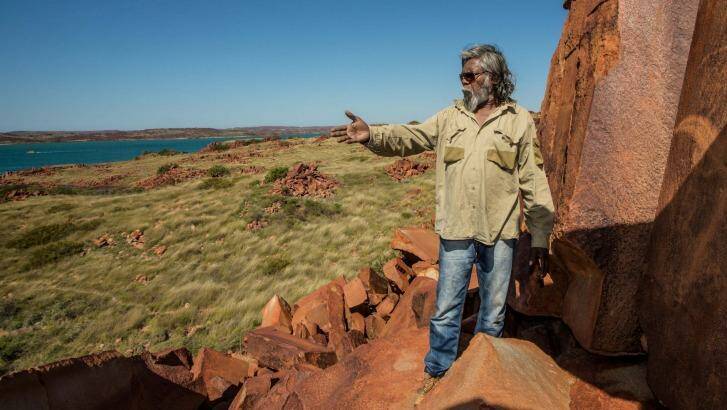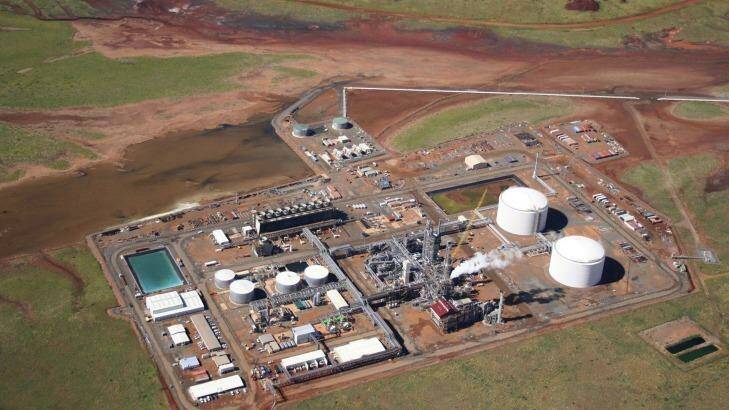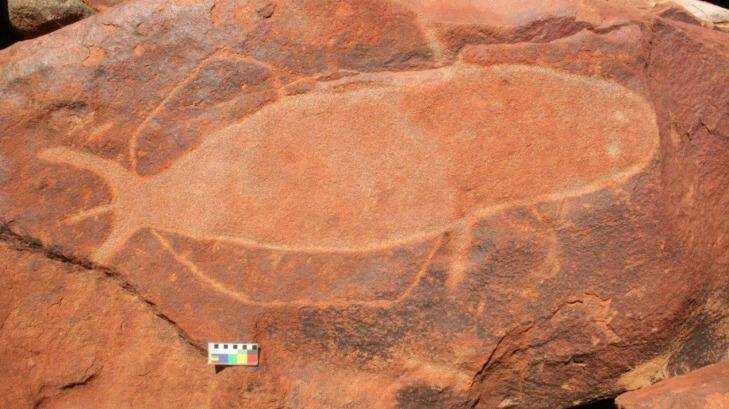



It has been called "Australia's most significant heritage site" and West Australian Premier Colin Barnett has said its listing on UNESCO's World Heritage list is "inevitable".
Subscribe now for unlimited access.
$0/
(min cost $0)
or signup to continue reading
Despite this, federal and state governments have failed to seek World Heritage listing for the Burrup Peninsula Aboriginal rock art, despite the Commonwealth inviting states to nominate potential heritage sites a little more than a year ago.
And no government has extensively engaged with the Aboriginal custodians to ascertain their opinion of how best to manage the art.
Murujuga Aboriginal Corporation chief executive Craig Bonney said: "The process required for Murujuga to apply for World Heritage status has not yet been explored and would only occur after the Murujuga board and community were fully informed of the pros and cons."
Mr Bonney said he is not aware of any such process occurring.
The Burrup has the world's largest collection of Indigenous art and includes the oldest known representation of a human face on Earth. It is the only Australian site to have been listed on the World Monuments Fund's most endangered sites. In 2007 the then environment minister Malcolm Turnbull listed the area as a National Heritage site.
On Sunday Fairfax Media revealed a series of errors by the CSIRO has put the art at risk of deterioration from industrial emissions.
In December 2015, federal and state environment ministers agreed to "work over the forward year" to see which sites could be added to the Australia's World Heritage "tentative list". Victoria has successfully had the Budj Bim cultural heritage landscape added to UNESCO's tentative list this year through this process.
WA Environment Minster Albert Jacob attended the 2015 meeting. His government has suggested zero sites for such listing.
Mr Jacobs would not answer direct questions as to why the WA government has not nominated the Burrup.
He said: "World Heritage status would not provide higher levels of statutory protection than what is already in place with the National Heritage listing and state legislative protections." He said a UNESCO listing could "provide greater recognition at an international level which could be used in promoting the area for tourism".
Campaigners for the rock art, such as the Perth-based Friends of Australian Rock art, say World Heritage listing is essential.
Successive governments, federal and state, have failed to have the Burrup Peninsula rock art listed as a World Heritage Site, despite claims that this is their intention.
A trail of correspondence and public statements from Labor and Liberal politicians express commitments to list the area on UNESCO's World Heritage list.
Mr Barnett has repeatedly referred to the rock art as having "world significance". In 2006 he said it was "absolutely inevitable" that the Burrup rock art would get World Heritage listing.
In August last year he tweeted a video saying the site will become World Heritage listed at some stage.
Ever seen WA's ancient rock carvings at the Burrup Peninsula? An extraordinary place we are committed to preserve. pic.twitter.com/JFKhsM22ED— Colin Barnett (@ColinBarnett) August 25, 2016
On March 26, 2003, environment minister David Kemp wrote to the WA environment minister Judy Edwards inviting the WA government to discuss how best to "include the significant rock engravings of Dampier Archipelago and the Burrup" in a World Heritage nomination.
Dr Edwards replied saying the WA government welcomed the opportunity to discuss the merits of such a proposal.
That process was to include consultation with the traditional Aboriginal owners.
Murujuga's Mr Bonney told Fairfax Media: "I am not aware of any consultation that the letter from Dr Kemp refers to, nor am I aware that a committee being formed to explore this was ever formed."
Rebecca Lawrence from Stockholm University studies relationships between industry and Indigenous and local communities in Australia and Scandinavia. Dr Lawrence is an honorary associate at Macquarie University.
She said: "These processes [World Heritage listing and site management] can often see an appropriation of Indigenous people from both sides – industry and conservation."
Murujuga's Mr Bonney said: "The Murujuga community appreciates the broad range of stakeholders who have great concern for our ngurra [land], but none understand its enormous cultural importance and value like we do. On the issue of World Heritage protection, we would like those stakeholders to talk to us and inform us about what world heritage listing may mean for Murujuga."
Dr Lawrence said: "Have the local Aboriginal custodians ever been engaged in the process? Has there ever been a properly funded consultation process to find out what they want to do?"
Robin Chapple, a Greens member of the WA parliament, said: "Over three terms of parliament I've seen governments make the same mistakes over and over again. If we don't get this protection in place soon we're in danger of losing this place forever."


